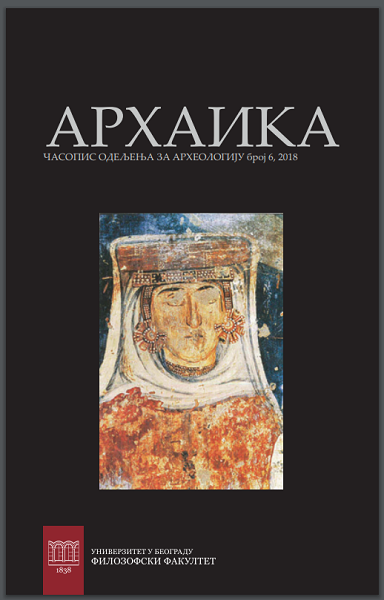АРХЕОЛОШКИ ЛОКАЛИТЕТИ У КОНТЕКСТУ КРЕИРАЊА НАЦИОНАЛНИХ НАРАТИВА - СТУДИЈА СЛУЧАЈА: ЦРКВА У ДОЊОЈ КАМЕНИЦИ
Arschaeological sites in the context of national narrative creation process: The Case study of church in Donja Kamenica
Author(s): Ivana DimićSubject(s): Archaeology
Published by: Филозофски факултет, Универзитет у Београду
Keywords: Donja Kamenica; history of research; paradigm shifts in archaeological theory; nacional identities; heritage; narratives; archaeology in public discourse
Summary/Abstract: The focus of the article is „observing” the history of research, considering the tendency of neglecting the paradigm shift and the context of research, the reinterpretation of the facts under the influence of new knowledge and the uncritical referencing to the authority of previous researchers. This paper provides the review of the research about the church with a necropolis in Donja Kamenica from the second half of the 19th century until the middle of the 20th century, then from the middle of the 20th century to the latest research. The survey of the research from the Republic of Bulgaria was also presented The location of Donja Kamenica – the church with a necropolis dates from the end of the 13th, or the beginning of the 14th century until the 16th century. The identity of the ktetor and the suzerain is unknown, since the inscriptions on the ktetor’s composition are damaged. Due to the circumstance of the partial preservation of the inscription and the absence of written sources about this church there was a long-lasting debate between Serbian and Bulgarian researchers on the identity of the ktetor and the suzerain. In this paper the influence of the romantic epoch on the interpretation of kteror and suzerain identity is analyzed. There is a problem of using the culturehistorical theory based on a comparative analysis of the church architecture, ktetor portraits and findings from a necropolis. The narrative about the ethnic connection between ktetors of Donja Kamenica church with the churchs’ ktetor in other areas was created based on an impressionistic, descriptive and typological method in archeology. The aim of the research is to examine the interpretation of the past, to analyze the mechanisms of usage of archaeological data as the main argument for legitimizing current circumstances in society, tourism promotion or current political goals of Balkan states (the Republic of Serbia and Republic of Bulgaria). The aim of the research is also to understand the ways of constructing the past through historiography, prose, journalism and everyday discourse.
Journal: Архаика
- Issue Year: 2018
- Issue No: 6
- Page Range: 83-114
- Page Count: 32
- Language: Serbian

